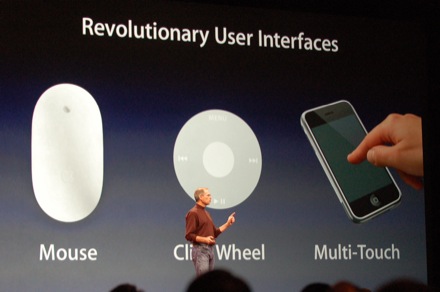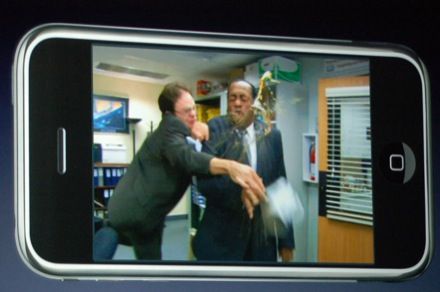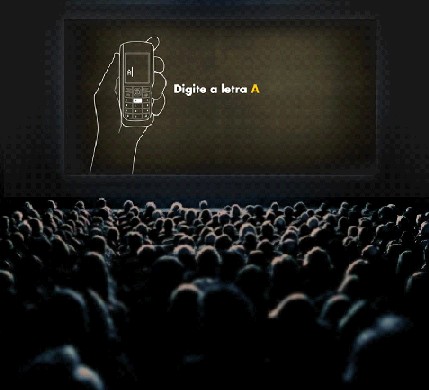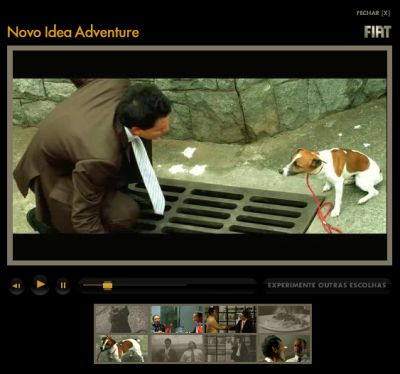von Roland Hachmann | Mai 8, 2007 | Ad News, Blog, Digital Culture, Digital News, Marketing, Marketing Trends, Mobile Marketing, Social Media Marketing
While I am still unsure about the real value of Twitter in marketing, Rohit Bhargava mentions four ideas of how Twitter can be valueable. I still ain’t convinced completely, but getting there…
Capture the live pulse of an event
This is one of the most popular marketing uses that I have seen for Twitter, where it is used to offer a visual display of conversations happening around an event. More and more interactive events have this, and I suspect other non-Web related events will start to incorporate it as well to offer participants a visual way to track the pulse of an event and determine where to spend time.
Undoubtedly, this could work. The question is: who is the target audience? If it is all those people at the event, who subscribe to one twitter feed about the event, it could be brilliant to let everyone know what is happening elsewhere within the event. If it is for people outside the event, the whole twittersphere of the event will sound like 140-character long gibberish to those not present, I suppose.
Deepen a static experience through live commentary
I saw an interesting story last week about how Fox is going to be using Twitter to promote their new show Drive by having the director provide live updates and directors commentary via Twitter throughout the show. We will definitely be seeing more of this type of marketing in the near future.
This could be nice, but only if the show is live, too. Otherwise, we’ll be reading tweets about stuff that we know nothing about until we see it a few months later on TV.
Facilitate collaborative watching
When it comes to watching video content online or on television, Twitter can allow you to watch something „alongside“ anyone anywhere by sharing your impressions and reading impressions from others as a program unfolds. This is a powerful new method of sharing feedback and ideas
This won’t work, if we truly believe in the end of programmed television. If people are not watching things at the same time, because everyone can watch „on demand“, then how can you share your thoughts with other viewers via twitter? Unless there is a „twitter group“ for that particular movie or series – and I just underestimate the scale of randomness: the fact that for some shows, there will always be somebody, at any given time, watching the same show as myself…
Add a new dimension to promotions
Scavenger hunts, user generated content campaigns, and other reality based marketing promotions are growing popularity as ways to encourage interaction from customers. Twitter can offer a way of encouraging dialogue between promotion participants and adding an „instant message style“ dimension to a promotion without the privacy and contact acceptance barriers normally associated with using IM for marketing.
This, I think, could be a fantastic use for twitter. A connection of customers in Twitter groups during promotions, enabling „swarm intelligence“, as we call it here in Germany, would be a brilliant setup for all sorts of ideas for promos, alternate reality games, real life social games or gatherings, etc.
So, in general, I start to like the idea of using Twitter for marketing, having been sceptical a few weeks / months ago. But I do think, that we still need a lot of refinement to make sure it’s not just a gimmick, but does actually contribute value to campaigns.
von Roland Hachmann | Mai 1, 2007 | Ad News, Blog, Digital Culture, Digital Marketing, Digital News, Marketing, Mobile Marketing, Online Advertising, SEO / SEA, Social Media Marketing
I am a big fan of Joe. I regularly read his blog and I really enjoy his podcast, listening to it while driving to work (it is really motivational and inspires me a lot, which I enjoy in the morning!).
And I have (finally) read his book. I am very late writing about the book. Why am I writing about it nevertheless?
More than a year ago, Joseph Jaffe came up with a concept he called „UNMTPNM„: Use new marketing to prove new marketing. He launched this idea in order to promote his (then) new book:
Life after the 30-second spot
Energize your brand with a bold mix of alternatives to traditional advertising.

I decided to take part, as I liked the idea of how he wanted to start word-of-mouth this way. Now I want to write the review. It’s late, but I thought better late than never. And this way, Joe gets a new mention during a time, when everyone is already writing about his new book, which should be coming out some time in the middle of this year. Which, by the way, extends on one of the thoughts what new marketing can look like in the future. So here is my review, apologies, again, for it being so late.
His main conclusion throughout this book and his blog and his podcast is always the fact, that traditional advertising is by far no longer as useful as it used to be. Or as he puts it: the 30-second spot has outlived its usefulness.
So what’s in the book? There are 3 main sections:
Section I – The Problem
In this section Joe describes the current state of the media landscape. How mass media are dying due to the fragmentation of media and increasing consumer resistance towards clutter and power of media choice.
This chapter lays out the foundation for the rest of the discussion. By now these things are common knowledge and widely discussed everywhere. Yet, in 2005, when the book was printed, these points were heavily debated everywhere. (And, by the way, in Germany these points are still relevant, considering the fact that we’re usually lagging some time behind.)
Section II – The Solution: Re:think Four Fundamentals of Marketing
In this chapter, Joe is Re:thinking four main areas that need, well, rethinking. These are: the changing consumer, branding, relevance of advertising and the agency/client situation. These chapters are a „theoretical basis“ for the approaches in the third section and . A nice idea: you cannot read chapter 10 within the book. You will have to download the pdf or the mp3 file (to listen to Joe read out that chapter for you).
Section III – 10 Approaches that are transforming the marketing and advertising games
The approaches expanded on in this section are: the internet (of course…), gaming, on-demand viewing, experiential marketing, long-form content, communal marketing, consumer generated content, search, music – mobile and things that make you go mmmm, branded entertainment. In essence this covers examples for all the buzzwords, that companies have been experimenting with in the last couple of years.
Comments on the Contents
The first chapter is rather preaching to the converted and sometimes a bit over the top. The facts might be true, but sometimes you get the feeling as if the world is going to stop, the way Joe writes about the end of „old“ marketing. For anyone reading the book now, the first 60 pages are common knowledge (or should be!). But as a summary on the situation it is not bad.
The second section is the one for me, that had the most juice in it. Purely because these are the backbone thoughts on how to think about marketing in the future. And – in contrast to the third section – these thoughts are more likely to be relevant even in a few years time. The third section covers many examples per approach, but even looking at them now, some already seem antiquated (which doesn’t make them less true).
Comments on the Style
His style of writing is rather conversational. One of the many examples:
„… in a survey conducted by the consultancy Emergence, a grand total of 0 percent (that’s zero, none, nada, squat, zip, nil) of those quizzed…“
That makes it awkward to read sometimes, especially considering it is a book, not a blogpost or a podcast. It is almost, as if he dictated the script for someone else to type it. But, speaking of which: keeping Joes way of talking in mind, you can almost read the book and hear his voice saying these things.
So should you buy it? I think it was Joe himself who once said: buying a book these days is like getting „the t-shirt“. An „I have been there“ thing at times when content itself is readily available everywhere… You could follow Joe’s thoughts through his blog, his podcast, by going to crayonville, etc. But this is the one source that best and most complete summarises what Joe thinks, writes and says about new marketing.
So while the book will not completely stay relevant in the next couple of years, I think it is a very valuable basis for re:thinking marketing and advertising. For anyone who read about the changing media landscape, wanting to find out how to possibly react (and not having had their agency recommend things already, which they should have done), read the book. Skim-read the first section, this should be no news to anyone by now, focus on the second section for strategic visions and get some ideas of what new marketing can look liek from the last section.
Don’t forget: you can order it online. (Any commision amazon might yield will go to Joe, as I copied this link of his website.)
von Roland Hachmann | Jan 9, 2007 | Blog, Digital Culture, Mobile Marketing
Steve Jobs has announced the new iPhone. And man, do I want one!! You can check out a transcript of the presentation at engadget, including photos of the new toy. I borrowed some, hope that is alright (let me know when you need them back).
The main thing: the whole phone is a huge touchscreen, except for a homebutton. I mean everything. Even the button lock is unlocked via a move on the touchscreen (one that can’t just happen by accident in your pocket).
You apparently also don’t need a stylus, as you can do everything with your fingers, almost as you are used to it from the clickwheel from the iPod.
All the Buttons you need appear when you need them:
I am absolutely fascinated by this. Of course you can also listen to songs and watch videos with it. Freeking brilliant, really.
So what will it cost?
So how much more than $499 should we price it? We thought long and hard about it… it does so much stuff…†He’s stalling for the drama. Enough Steve! “What should we price it at? For a 4GB model we’re pricing it at $499 — no premium whatsoever.
“We’re going to have an 8GB model for just $599.â€
Unfortunately we’ll have to wait until June 2007 until it becomes available. And that’s probably only in the US. When will I be able to get it in Germany?
von Roland Hachmann | Nov 25, 2006 | Ad News, Blog, Digital Marketing, Digital News, Mobile Marketing, Online Advertising
Robert Passikoff writes about seven brand and marketing trends for 2007
He starts of with a nice quote:
Nobel Prize winner Niels Bohr once noted that “prediction is very difficult, especially about the future,�
And then continues pitching his company USP:
but then he didn’t have access to predictive loyalty metrics. Happily, we at Brand Keys do.
The 7 trends are (*drumroll here*):
- An ongoing emphasis on “engagement.�
- More reliance on consumer-generated content.
- More, more branded entertainment.
- Media planning will become more “touch point� focused.
- Using technology and engagement to better communicate with consumer expectations.
- Expanding the potential of Websites, blogs, and the digital world.
- Innovation and loyalty will matter more.
Sounds good. But there is nothing really new in this. The only difference being, that these trends will probably now reach a certain visibility among marketers so that we’ll see a lot more campaigns, tactics, etc. around these 7 points. I am certainly looking forward to that.
von Roland Hachmann | Nov 21, 2006 | Ad News, Blog, Digital Marketing, Digital News, Mobile Marketing, Online Advertising
Wow, this sounds great:
…the six-minute-long interactive movie is in the „choose you own adventure“ style and generates 16 different endings depending on the choices of the audience. During the adverts the audience are given 4 different questions to answer and which they need to text to a given number. The final version of the movie is compiled from the clips that gather the most votes (which is all handled digitally). (via Adverblog)
There also is a campaign site offering the same for the home viewer. First, you select which type of scenes you want (my portuguese is not so good, so I just chose randomly):
and then you can see your „selfmade“ movie:
Even though the idea of the campaign site is nice, the WOW-effect of sitting in a movie theater and being able to influence what’s on the big screen is of course much more amazing.
However, I hope they let it run 2-3 times at least, because if they only do that once, you won’t be able to getting a feeling how the movie changes from time to time and might even assume that it’s the same movie every day…
von Roland Hachmann | Nov 16, 2006 | Blog, Digital Culture, Digital News, Mobile Marketing
Burger King, MasterCard Sponsor Specialized Mobile Web Content writes Clickz. Both brands seem to have already gathered some experience with mobile applications. Now they have partnered with content providers for some new projects:
Men’s lifestyle magazine Maxim is now offering specialized content for mobile devices found at mobile.maxim.com, including jokes of the day, forums, and even streaming videos of „Girls of the Day.“ To do this they’ve partnered with fast food giant Burger King as sponsor.
And Mastercard:
MasterCard Worldwide has partnered with Fox to create a series of 26 short episodes for mobile devices based on the television series „Bones“ with mobile episodes entitled „Bones: Skeleton Crew.“ In addition to sponsoring what it’s calling Mobisodes, MasterCard will also be incorporated into the storyline.
Slowly, brands are moving into this space, gaining knowledge with this new channel. I appreciate it, because mobile is the future, no matter how small the displays of our phones and PDAs are today – at some point a majority of grown up teens with SMS-thumbs and 2.5 square inch wide eyes will resemble a non-ignorable base.









 Wo ich sonst so bin...
Wo ich sonst so bin...